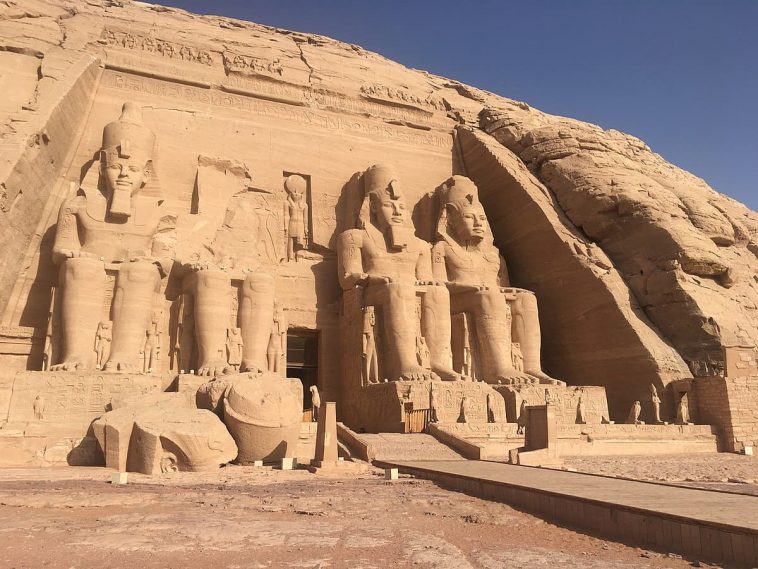Famous Ancient Egyptian Monuments
1. Temple of Hatshepsut
Temple of Hatshepsut is a mortuary temple in Upper Egypt. It is also known as Deir el-Bahr Temple, located in the cliffs near the Valley of Kings, close to Luxor City. This temple was built by well-known pharaoh Queen Maatkare Hatshepsut who ruled as a king in 15th century BC. The temple represents one of the finest examples of classical Egyptian architecture.
It was excavated in 1891, and parts of it have been reconstructed. It has stepped platforms and porticos, and it shows evidence of a sun court, chapel, sanctuary, and a monumental gateway (Pylon). The temple is decorated with scenes from her reign and has shrines dedicated to various Egyptian gods-Anubis, Hathor, Amun, and Ra.
Also Read: 10 Most Beautiful Lost Cities In The World
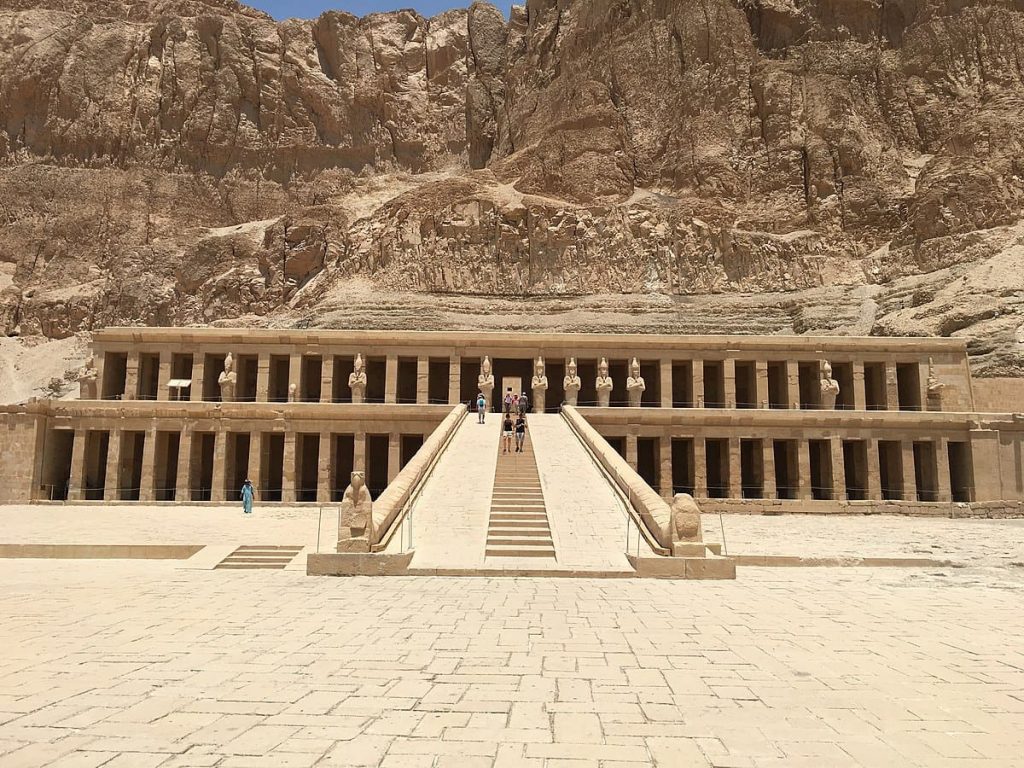
Image Source: Wikimedia
2. Medinet Habu
The Temple of Ramesses III at Medinet Habu is another important New Kingdom period mortuary temple structure in Luxor in Egypt. It is dedicated to the god Amon. This temple was enclosed within a fortified wall. It also had magnificent entrance towers, a royal palace, an open temple court, and even priests’ dwellings and administrative units on either side of the temple. The temple had beautiful carvings of scenes that represented Ramses’ wars against the Libyan and Nubian enemies.
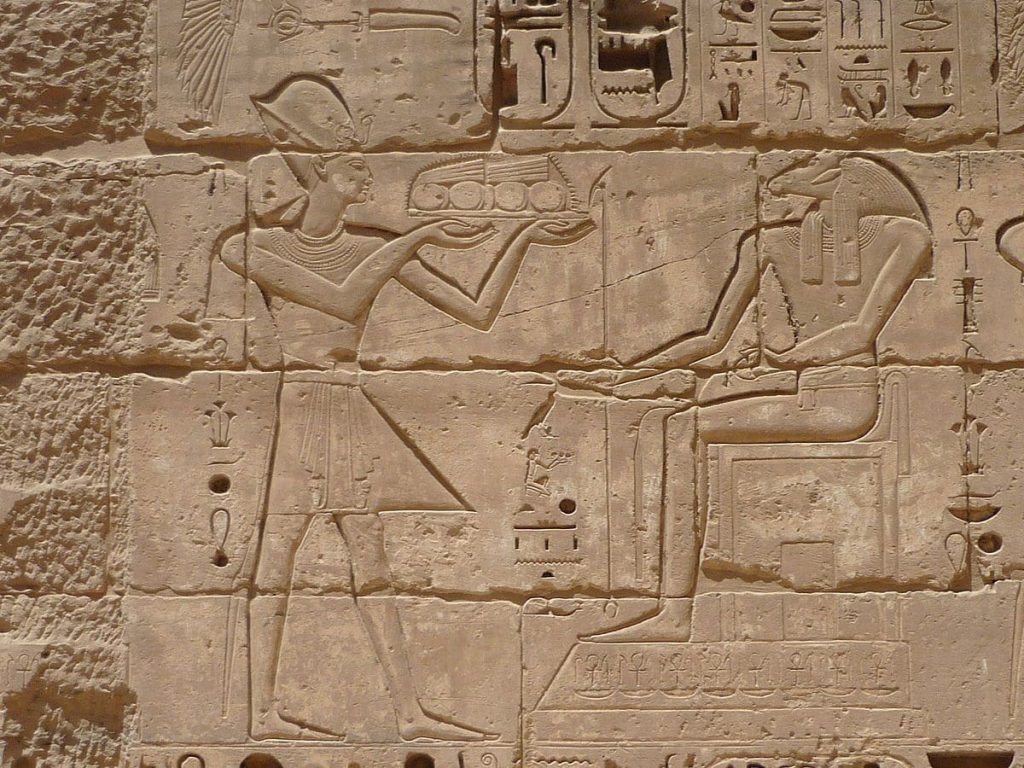
Image Source: Wikimedia
3. Pyramid of Djoser
The Pyramid of Djoser, or Step Pyramid, is an archaeological remain in the Saqqara, close to Memphis City in Egypt. This is a massive 6-tier structure with four sides and was one of Egypt’s earliest huge stone buildings. It was built in the 27th century BC for the burial of Pharaoh Djoser. The pyramid is made in a huge 40-acres complex with several structures like a courtyard, temples, and chapels. All these structures were enclosed within a 30-ft tall wall enclosure. The ancient Egyptians believed in life after death, and mortuary temples were built to secure a prosperous afterlife for the kings.
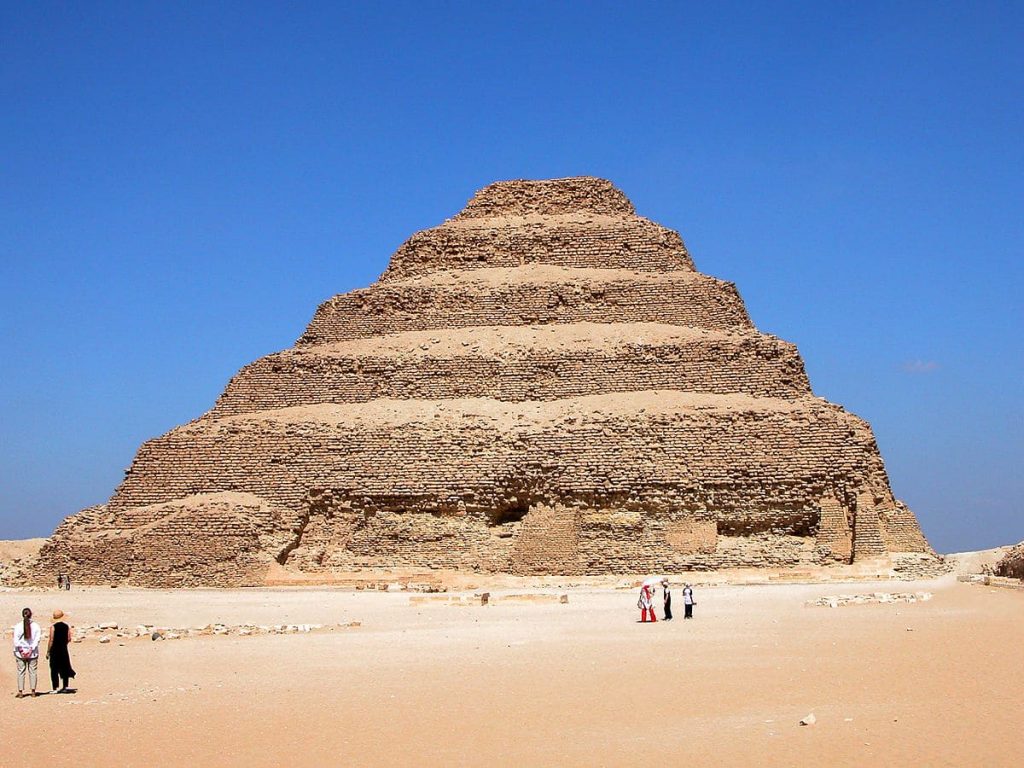
Image Source: Wikimedia
4. Luxor Temple
The Luxor Temple is a temple complex located in Thebes, located in modern-day Upper Egypt. Thebes was the ancient capital of the New Kingdom of Egypt and was situated on the east bank of the Nile. The temple construction was started by the pharaoh Amenhotep III and was completed by Tutankhamen. This area is a place of religious worship and was dedicated to Egyptian gods like Amon-Ra. The whole temple is made of red sandstone blocks and surrounded by mud-brick walls. It has a beautiful pylon or a temple entrance, which has Ramesses II statues on either side of the entrance. It leads to a large courtyard and hall with columns with carvings of the papyrus, lotuses, and other plants.
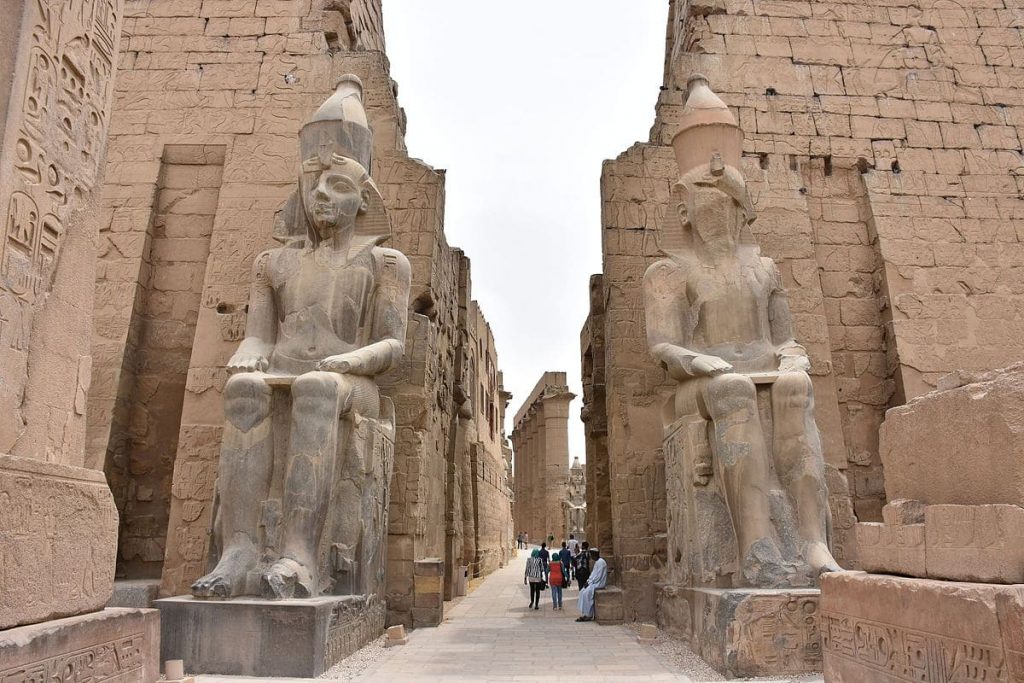
Image Source: Wikimedia
5. Karnak Temple
The Karnak temple was an Egyptian Cult temple dedicated to Amun, Mut, and Khonsu gods. It existed around 2055 BC to 100 AD, and almost 30 pharaohs contributed to its building. It was the largest religious building ever constructed and covered about 200 acres. It was considered a sacred place by the Egyptians and continued to be a pilgrimage site for 2000 years. The great temple is so big that St Peter’s, Notre Dame, and the Milan Cathedrals can easily fit within its walls. The temple has a vast and beautiful Hypostyle hall, with 134 columns, which is still the largest room of any religious building in the world. The surrounding area has many small temples, living quarters for priests, and a vast lake.
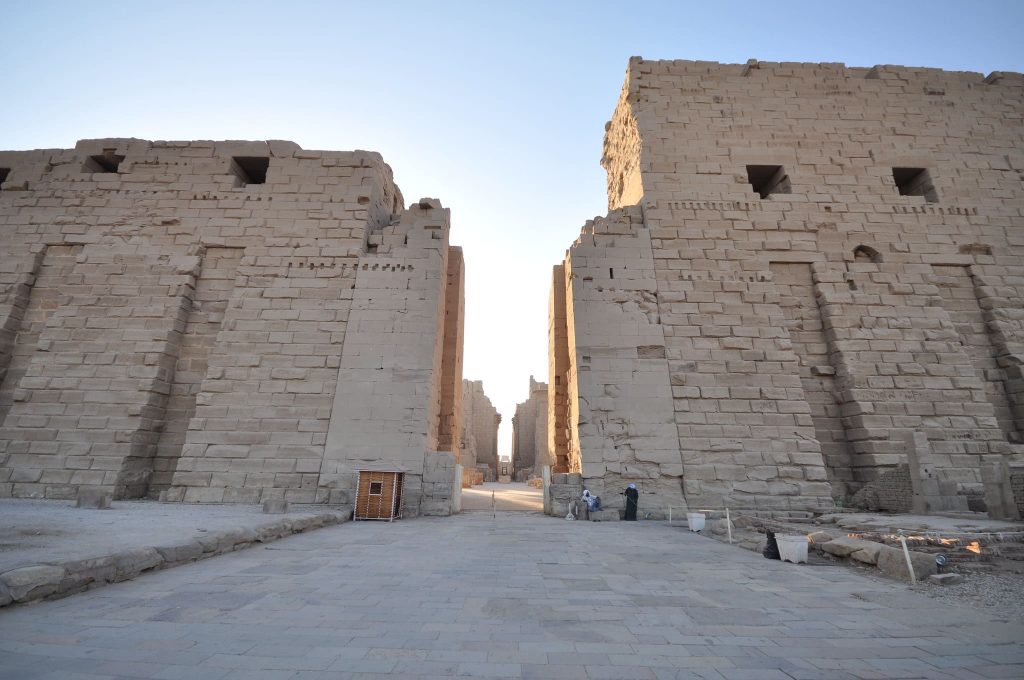
Image Source: Jorge Láscar(Flickr)
6. Colossi of Memnon
The Colossi of Memnon are two colossal stone statues of the Pharaoh Amenhotep III from 1350 BCE, located in the Theban Necropolis. This is situated to the west of the River Nile from the modern city of Luxor. Both the statues depict the Pharoah in a seated position on a stone throne. His hands are shown resting on his knees, and his eyes are gazing towards the river. The Two shorter figures of the pharaoh’s wife Tiye and his mother Mutemwiya are carved alongside his legs on the throne’s front panel. The side panels depict the Nile god Hapi. These statues were meant to protect the Pharaoh’s temple from evil.
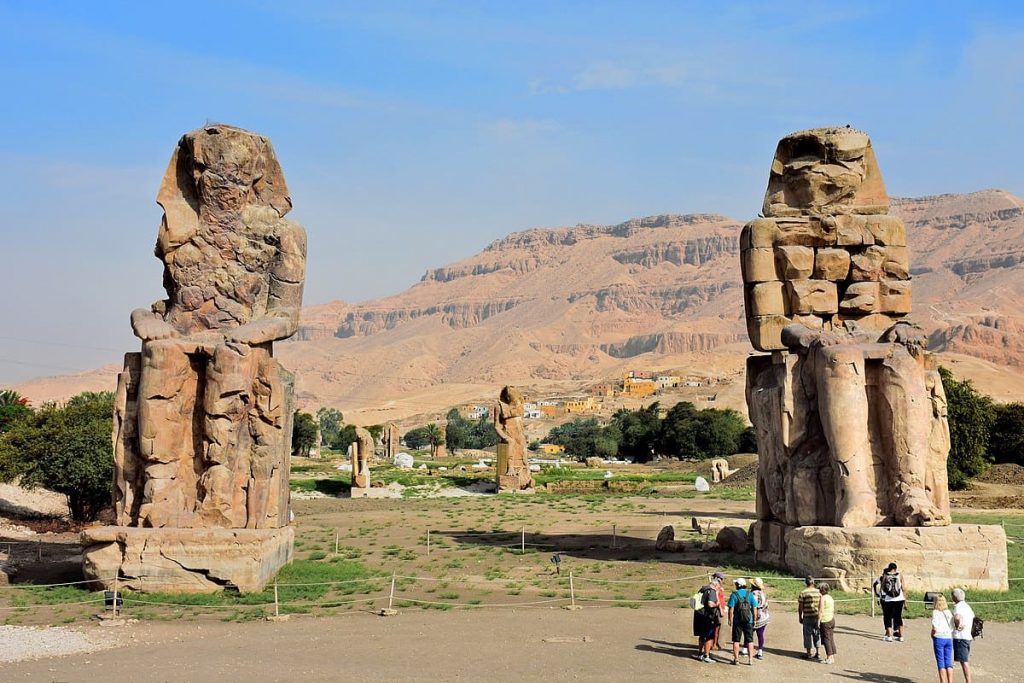
Image Source: Wikimedia
7. Temple Of Philae
The Temple of Philae was another Egyptian temple complex on Agilkia Island on Lake Nasser. Philae, in ancient Egyptian means ‘the end,’ i.e., it defined the southernmost limit of Egypt. It was begun by Ptolemy II and completed by the Roman Emperors. The Temple was dedicated to the goddess Isis, the daughter of the earth God Geb. She was also the wife of Osiris and mother of Horus. The temple walls contain beautiful scenes from Egyptian mythology. They reveal pictures of Isis bringing Osiris back to life, giving birth to Horus, and mummifying Osiris after his death.
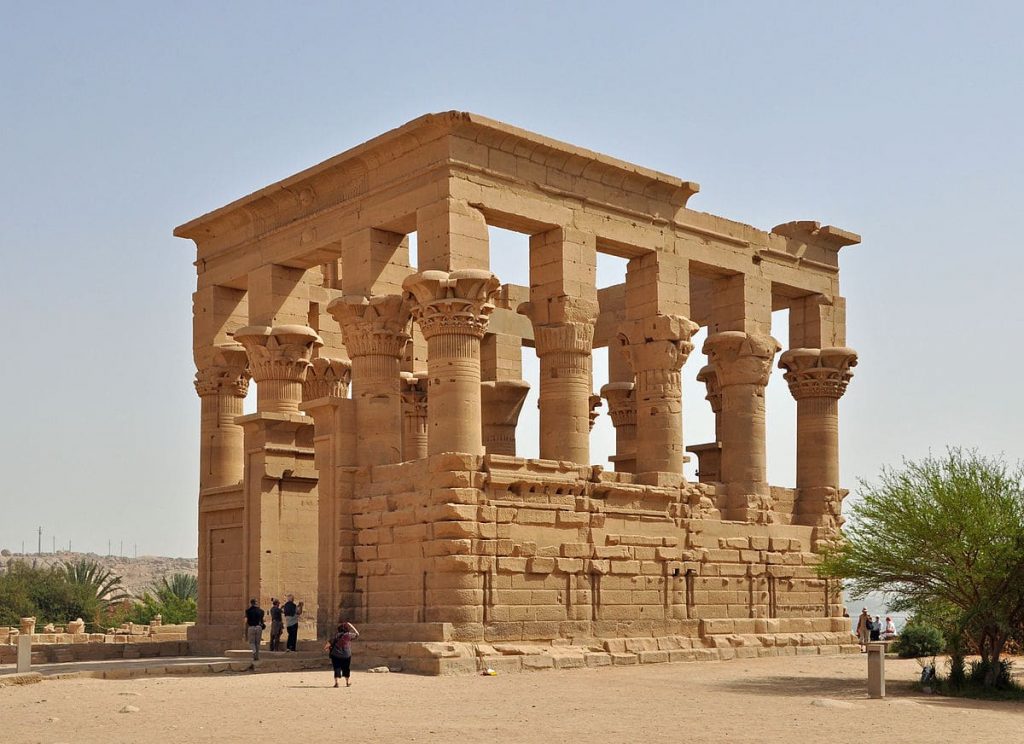
Image Source: Wikimedia
8. Abu Simbel Temples
The Abu Simbel temples are situated on the western bank of Lake Nasser at Abu Simbel, in Aswan, Egypt. They are two colossal rock temples built under King Ramses II’s leadership between1290 and 1224 BC. It is dedicated to the Sun God and represents a brilliant example of architecture built on a solar phenomenon. As the sun rises above the horizon, sunlight radiates through the temple doors. It is focused through the interior hypostyle hall directly into the inner sanctuary to light up the statues of Ramsey II and the Sun God. The structure is built so that Ptah, the god of the underworld, remains in the shadows. This event is now celebrated with the Abu Simbel Sun Festival, held twice a year –22nd February, when Ramses ascended the throne, and 22nd October, on his birthday.
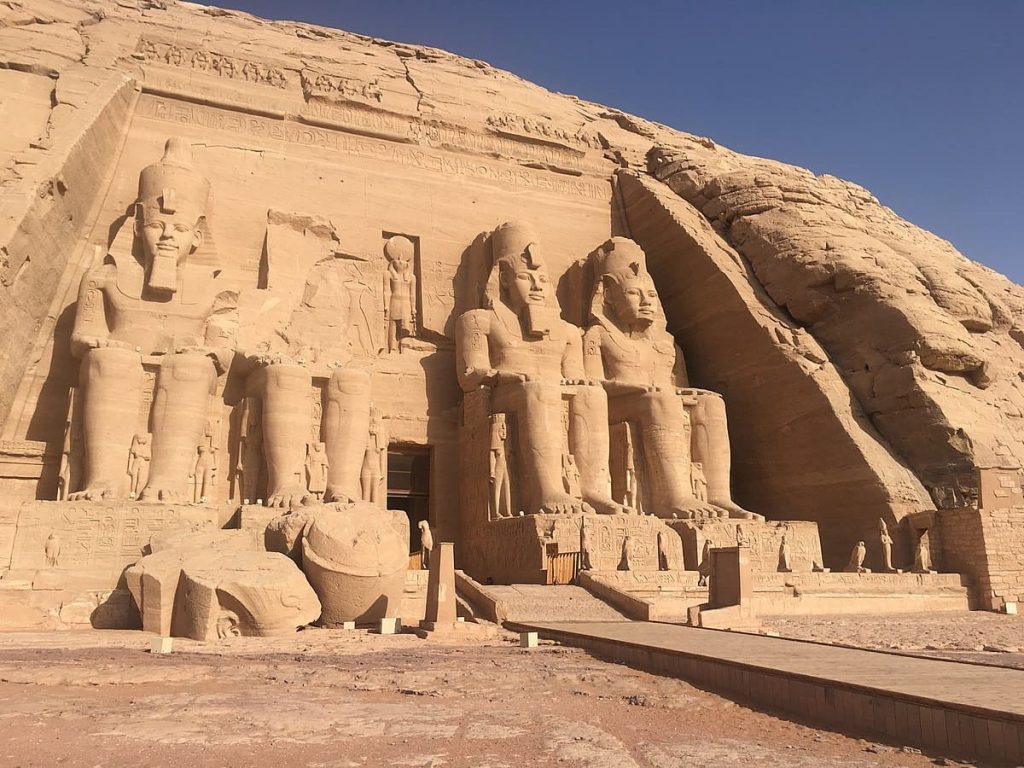
Image Source: Wikimedia
9. The Great Sphinx
Egypt is famous for its ancient pyramids, especially the pyramids in Giza. The Sphinx is the oldest stone sculpture from the pyramids of the Old Kingdom. The Sphinx is carved out of natural limestone rock and is almost 20m high and 73m long. It has a lion’s body and the head of a human. It bears the face of the fourth-dynasty pharaoh, Chephren, who built the second-largest pyramid in the Giza and was treated as a powerful god. Later on, a chapel was built next to the Sphinx dedicated to the Sun God.
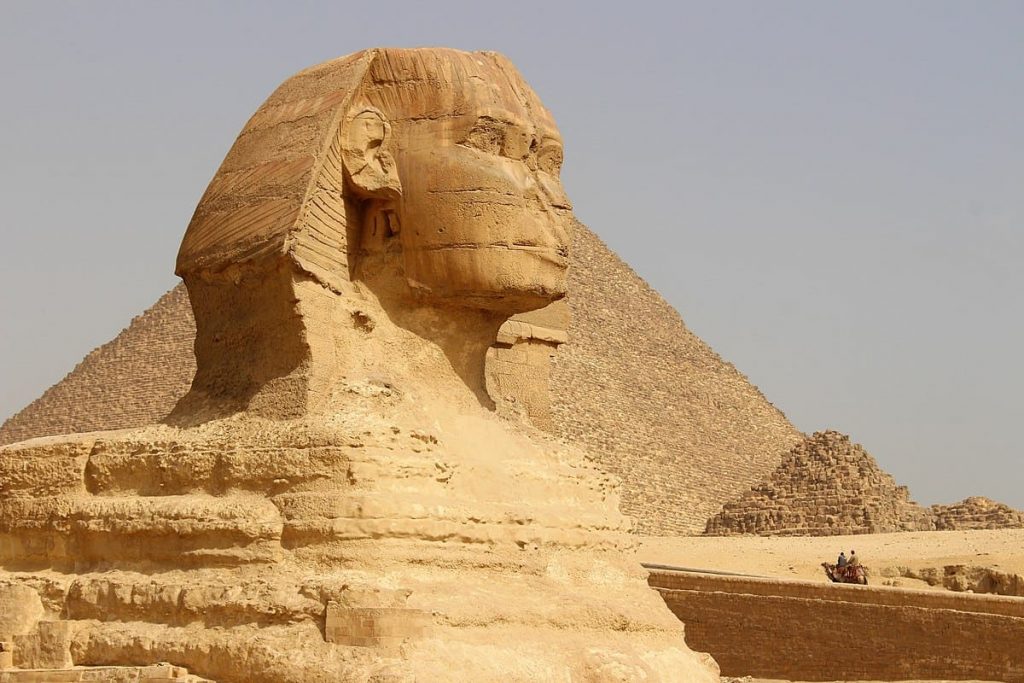
Image Source: Wikimedia
10. Valley of Kings
The Valley of the Kings is a valley in Egypt where the ancient Egyptians buried their pharaohs and nobles in rock-cut tombs from the 16th to 11th century BC. There were about 60 such tombs built with underground mausoleums that contained treasure. Some of the chambers were large enough to have 100 rooms! Most of the treasure was looted over centuries, but the tombs remain.
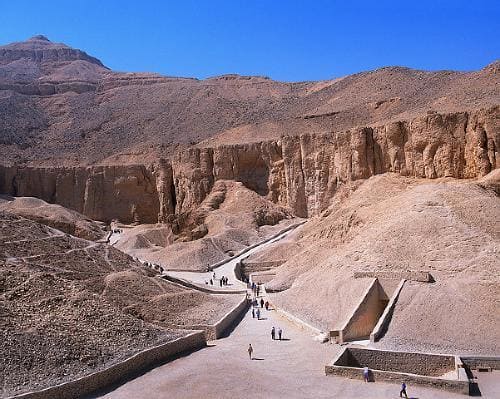
Image Source: Shelby Root (Flickr)
These are some of the famous Ancient Egyptian Monuments. Most of these Ancient Egyptian Monuments were built as temples or for the gods’ formal religious worship or dedicated to their pharaohs. Some of them were tombs as well. These magnificent architectures have survived over centuries and continue to inspire millions of people who visit these sites



